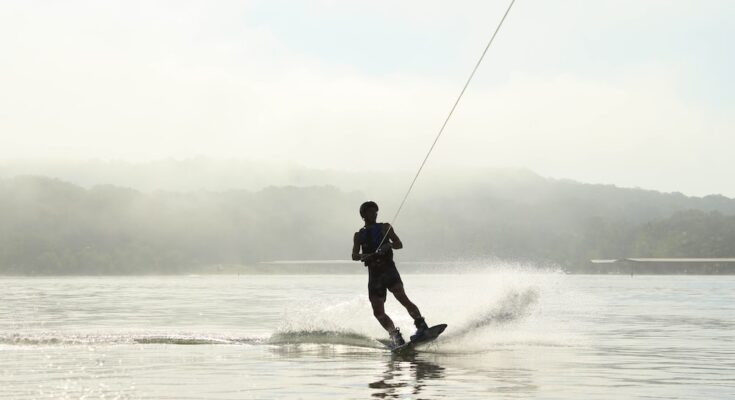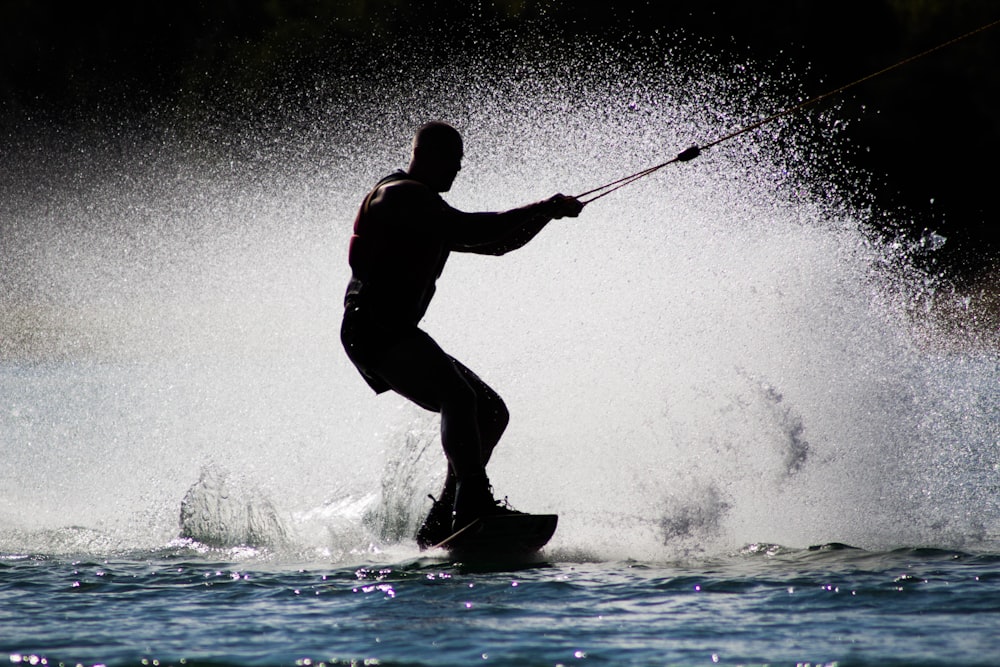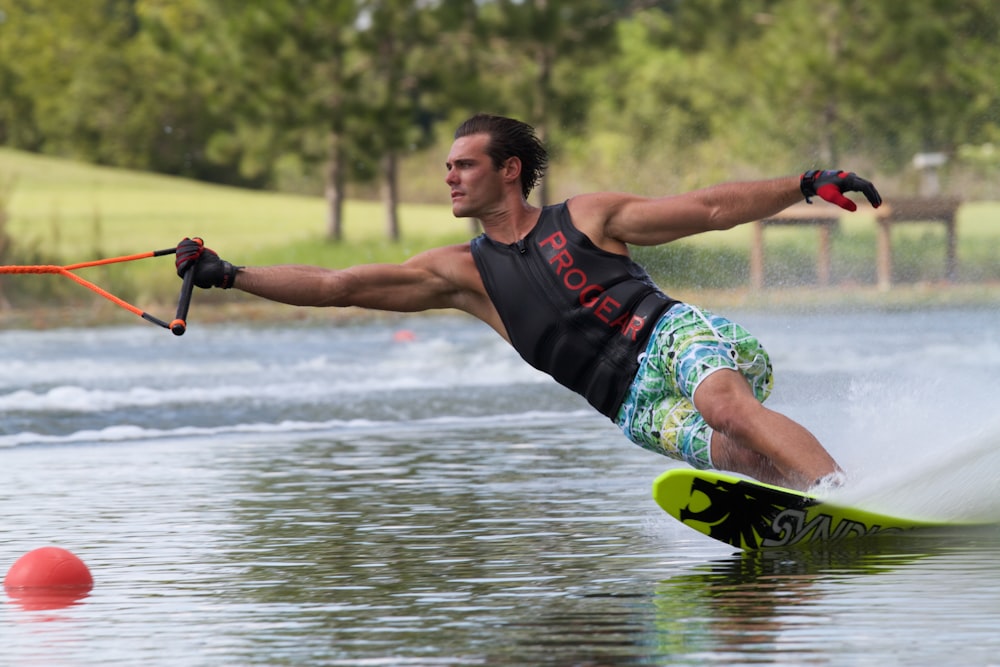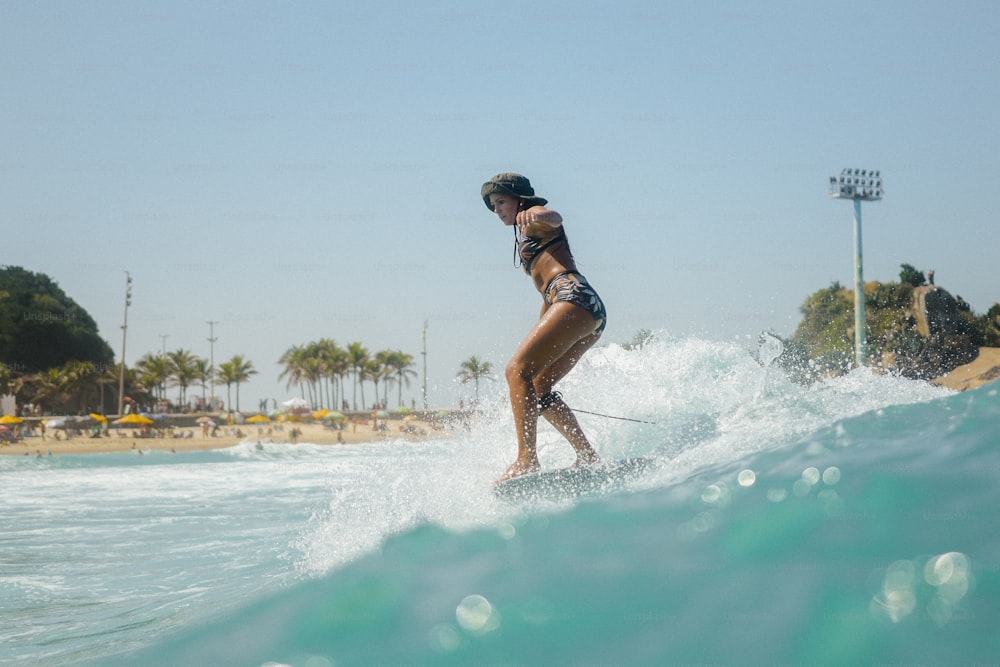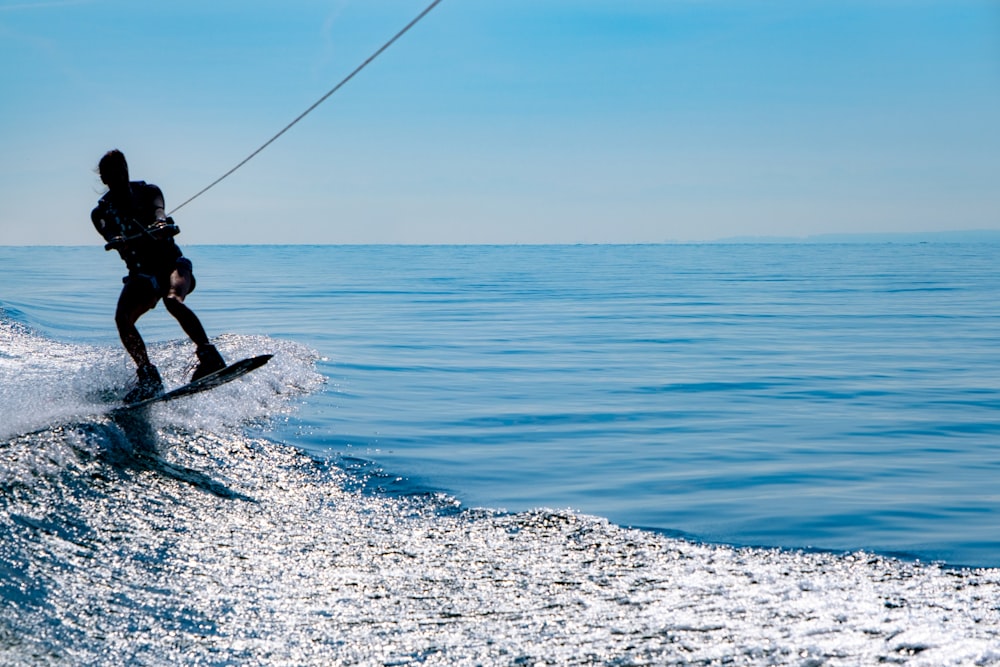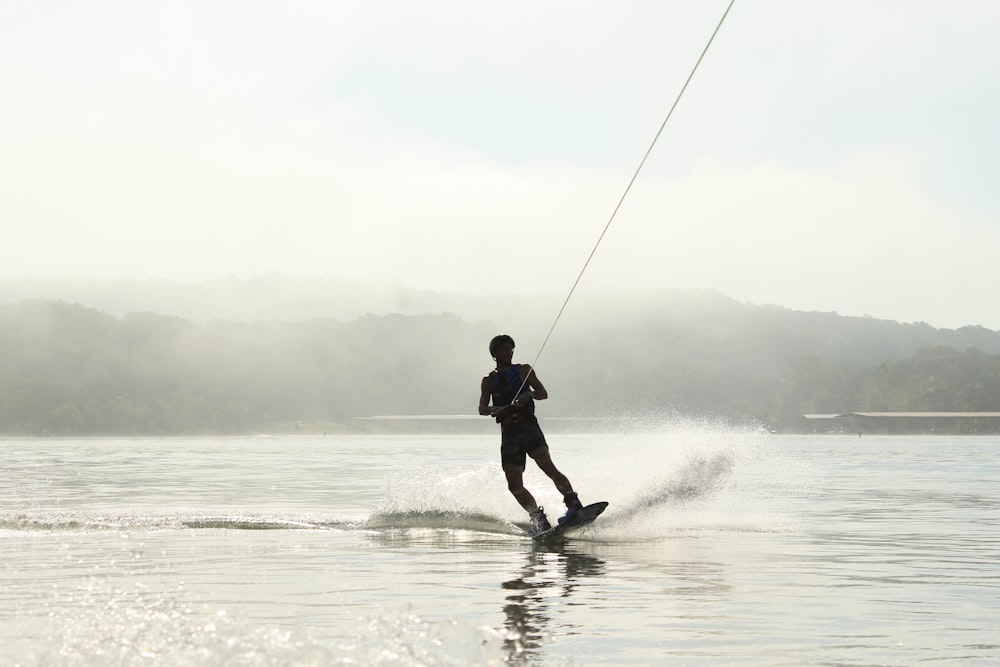Learn to Water Ski for a safe and adventurous Ride
Ever witness someone water skiing? Have you ever been mesmerized by how smoothly they move through the water and thought, “I want to do that?” You won’t have any trouble water skiing once your learn it with a few pointers and the right planning!
Wear a life vest: learn water skiing
Image via Unsplash.com
A jacket or vest that covers the chest, stomach, and back is the ideal personal flotation device. In order to prevent the life vest from slipping up on the body after falling, it must be properly fitted.
It should be tight yet not oppressive.
Make sure to read the manufacturer’s label to find out the weight and size restrictions.
Get water ski: learn water skiing
Image via Unsplash.com
You need a pair of combination skis, which feature two skis with one ski having a half-foot binding behind the other foot and are appropriate for novices. Beginner skis are often wider and more stable on the waters. It’s crucial to choose a ski that fits your size because they will be created for different weight ranges.
For the suggested weight ranges for the specific skis you’re considering, consult the manufacturer’s recommendations.
Children can more easily manage skis since they are smaller and less complicated. When you tie the skis together to prevent a skier from losing balance and doing the splits, they typically have a “trainer” option.
In order to fit a variety of persons, the bindings will typically be changeable for a range of sizes.
Tie skis together
Kids’ trainer skis are frequently connected together to prevent “splits” by the child. This is especially helpful for kids when they first start skiing because they typically struggle to maintain control of their skis and keep them together.
Use a proper skiing rope: learn water skiing
Image via Unsplash.com
The length of a water-skiing rope, from the handle to the other end, is 75 feet (22.86 meters), with very little stretch. Use a rope that will not stretch, such as a wakeboarding rope, and avoid using a rope with excessive stretch.
It is necessary to brand and sell the rope specifically for water-skiing.
Using signals
A skier should master the seven various hand gestures. These are crucial for skiing signaling the boat driver.
- A thumbs-up signals an acceleration, whereas a thumbs-down signals a slowdown. This is crucial to keep in mind while skiing so that you do not unintentionally request additional speed.
- To indicate “OK,” touch thumb and forefinger together. This informs the driver of good speed and path.
- When you wish to turn in a specific direction, put your finger in the air, move it in a circle, and then point in that direction. The water skier can use this to indicate that they desire to go a specific direction, or the boat driver can use it to alert the skier of a turn.
- To indicate that you want to go back to the dock, pat your head. If you want to finish and are exhausted, you can do this.
- The boat must come to a complete stop with a cutting action at the neck. In an emergency, the skier, driver, or observer can perform this.
- After a fall, place your hands over your head to show that you’re alright.
A safety ski flag: learn water skiing
Image via Unsplash.com
Ski flags are required on boats in many states. Other boats are routinely alerted to the presence of skiers in the water by these flags, which are typically brightly colored. The flag must be held up for other boats to see whenever the skier is in the water and not skiing.
This is a crucial safety precaution, and most boats will require an observer to keep an eye on the skier and hold the flag.
Learning the stance
The “cannonball” position is the correct stance for beginning to water ski.
- Put the skis on your feet and step out onto dry land.
- Holding the grip and bending your knees will position you on the skis in a position similar to that of a cannonball.
- To assist in lifting you into a sitting position, have someone gently pull on the other end of the rope. Despite there not being a chair, you will appear to be seated in one.
- To allow the rope to pull you up, keep your knees together at all times and keep your arms straight.
Driving boat properly: safe water skiing
To start quickly or have a lot of torque is crucial while pulling a water skier. This necessitates a boat that is reasonably sturdy and a quick start from scratch. This will make it easier for the water skier to effortlessly mount their skis.
To achieve a comfortable ride for the water skier, the driver must pull steadily. For a novice water skier, it can be very challenging to stay balanced if they change speeds or turn unexpectedly.
Picking pace when water is calm
Image via Unsplash.com
Water skiing typically works best in the early morning because the water is at its calmest then. There may be more traffic later in the day, which would result in rougher waves.
To lessen the bumps for the skier when you do reach rough or wakes, hit them at a 90-degree angle.
Kids need to enjoy skiing, so when teaching them, try to choose a time that works for everyone.
Be careful of the speed: learn water skiing
Although speeds will vary depending on the skier’s size and skill level, there are certain general rules for skiing. Children should be removed as slowly as possible while remaining on dry land. The speeds mentioned here are only appropriate for skiing with two skis.
- Less than 50 pound (23 kg) skiers should be hauled at a speed of around 13 mph (21 km/h).
- 50-100 pound (23-45 kg) skiers should be hauled at a speed of roughly 16 mph (26 km/h).
- 100-150 pound (45-68 kg) skiers should be towed at a speed of roughly 18 mph (29 km/h).
Keep distance from docks and shores
Image via Unsplash.com
It’s crucial to make sure you maintain a sufficient distance from any docks or other obstructions because you can easily slingshot a water skier on a turn. Keep in mind that if a skier lets go, they can glide quite a distance before falling into the ocean.
Avoid crossing any areas of shallow waters or where there might be obstacles just above or below the water’s surface.

